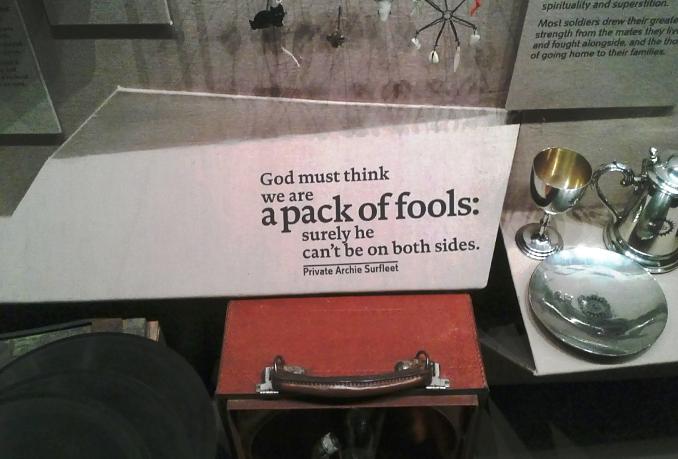Piano Tuner in Inverclyde, Renfrewshire, Glasgow, the west of Scotland and beyond.
Tel: 07714959806
Chopin Scherzo No 3.mp3
Bill Boyce Taxi Hire Greenock
A retired couple in Greenock whose piano I was tuning asked: Are you related to the Boyce who had a taxi business in Roxburgh Street ?
Indeed yes, I explained. Bill Boyce was my grandfather's brother. Therefore, my great-uncle. I never knew him as he died in 1953.
Here is a photograph of the business at 80 Roxburgh Street. Probably this is the only such photo that exists.
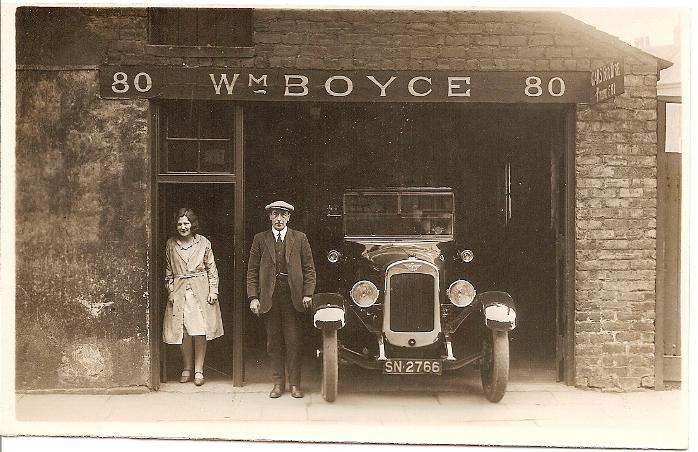
The office assistant looks amused at having her picture taken!
My late Mother always told me that Bill Boyce had a Rolls-Royce taxi, but I didn't report that here until now (June 2022) as I never had any independent corroboration. However. Mr C. Taylor of Perthshire, originally from Greenock, recently got in touch with me, and confirms that my great-uncle Bill did indeed have a Rolls-Royce.
There is a 1931 Greenock & District Directory online here
Here are the Boyces in it:
BOYCE Alexander, marine engineer, 54 Union St.
Boyce Hugh, joiner, 51 Bannockburn St.
Boyce Michael, labourer, 16 Port-Glasgow Rd.
Boyce Thomas, plater, 52 Bannockburn St.
Boyce William, taxi-hirer, 80 Roxburgh St.
Boyce Mrs Sarah, 66 Holmscroft St.
Boyce Mrs Hannah, 5 Bruce St.
This page is not about pianos, folks!
It has been prompted by the fact that a number of people expressed an interest in the historical aspects of the Granny's Piano page
So I thought there might be some interest in some other local old photos and ephemera, in the family's possession for a century.
The huge event in the lives of my grandfather's generation was of course this:
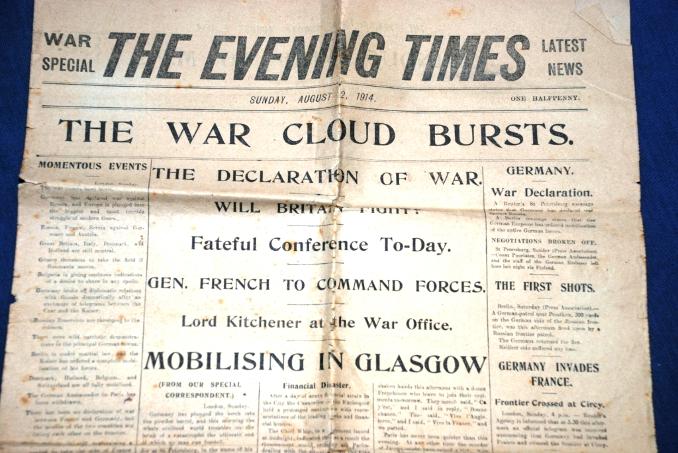
The First World War or The Great War. The "war for civilisation" as the medals put it. With 2014 marking the centenary of the outbreak of that global conflict, 2018 being the centenary of its ending, attention has focussed anew on how it shaped the world. Many documentaries have examined the Great War and its impact.
William John Stewart Boyce, 06/05/1886-17/09/1953 had, according to my late mother, some small exposure to gas during the war and poor health in later life. Here he is in uniform:
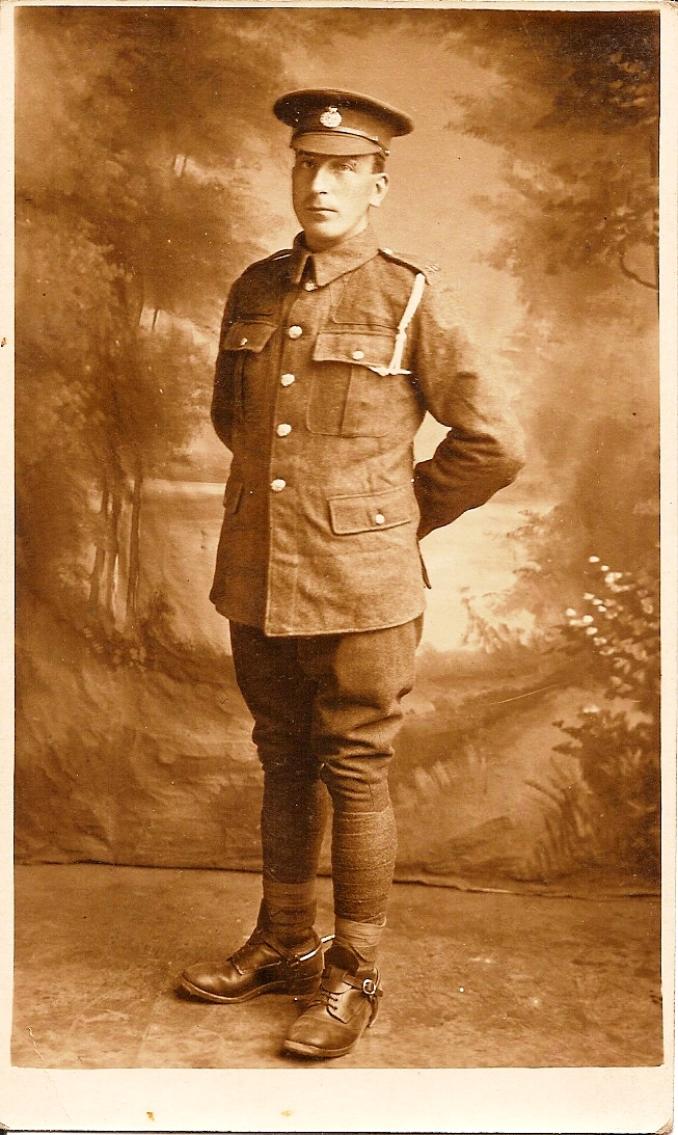
Bill Boyce's younger brother Hugh was my grandfather. He served a joinery apprenticeship with Greenock firm Cairds. He is second from the left in the back row of this 1911 photograph of the apprentices.
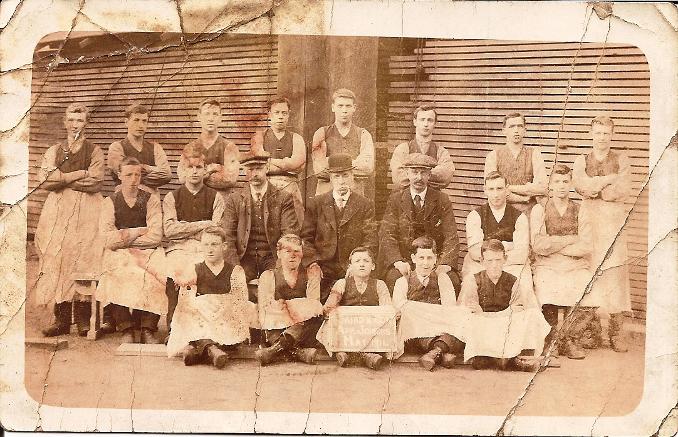
And in uniform here:
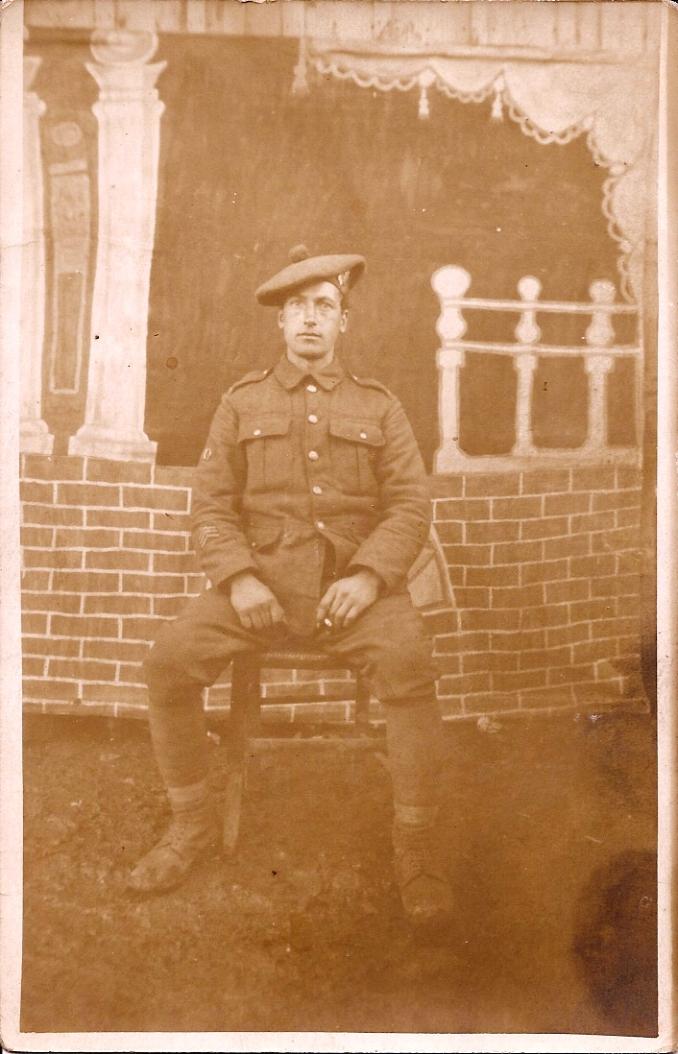
And on horseback
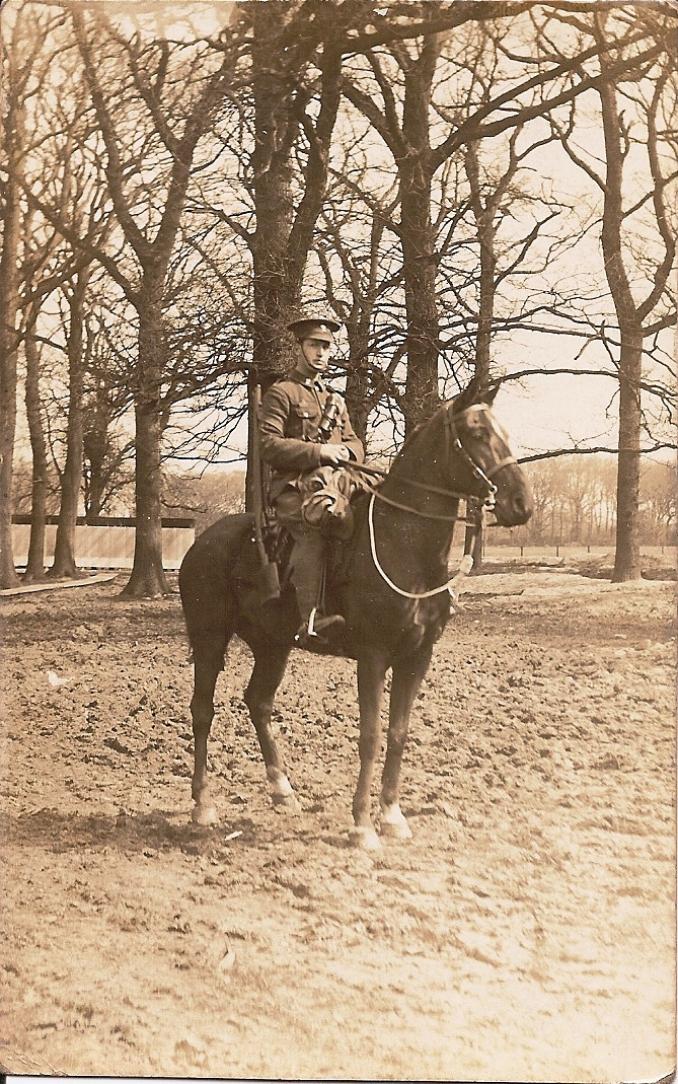
Training camp at Selkirk
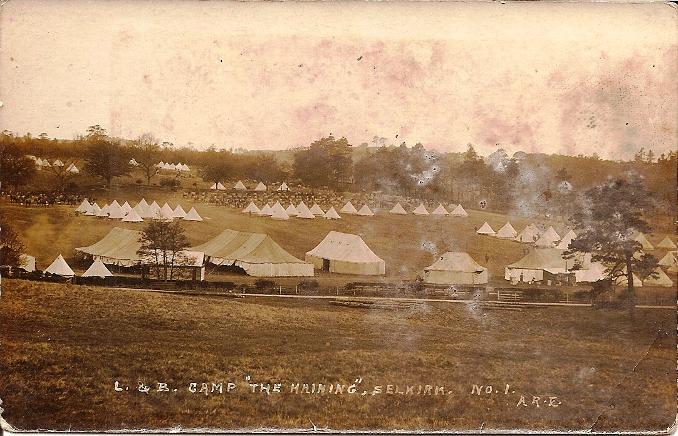
Mounted troops
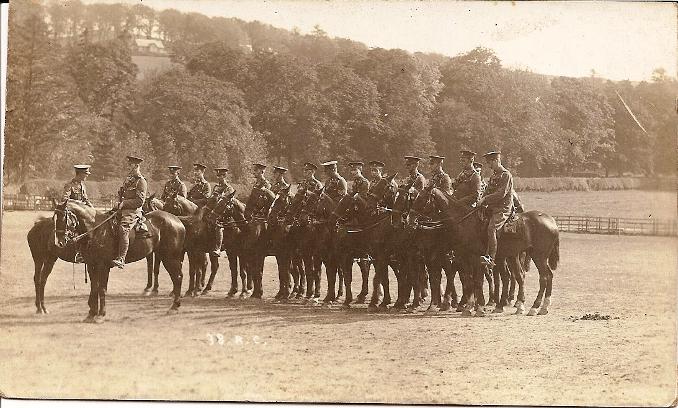
The role of enormous numbers of horses used in the Great War has lately received renewed attention and there has been the very successful and acclaimed theatre production called War Horse based on the 1982 novel of Michael Morpurgo, source also of the 2011 film by Stephen Spielberg.
Battlefield
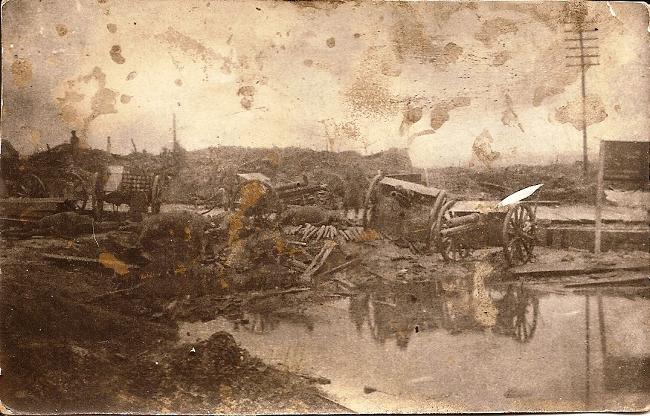
Below shows the reverse of the above photo has this explanation. Hugh served in Salonica (Thessalonica) as a farrier - working with and caring for war horses.
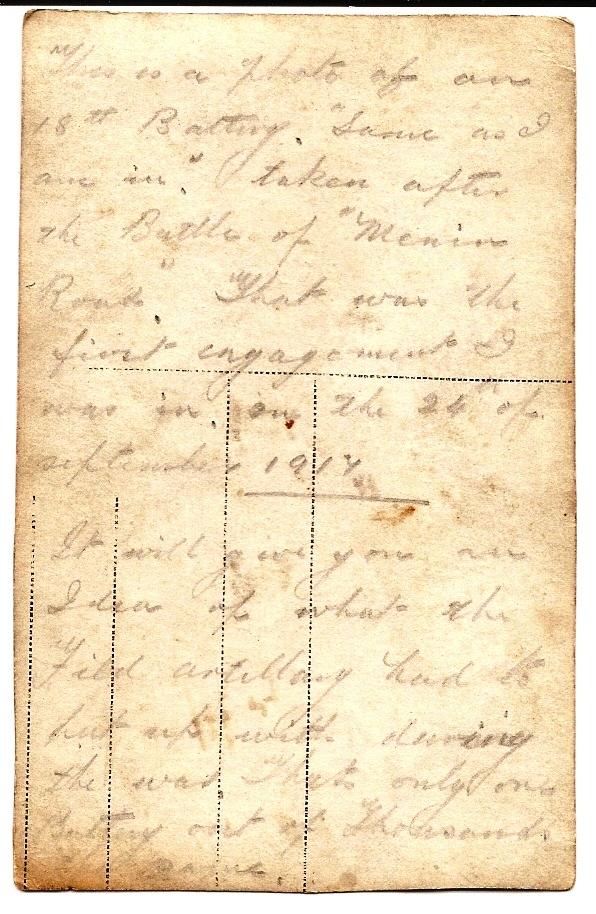
Bill and Hugh Boyce survived the Great War. Bill's health was damaged and he died in 1953 without having married.
Their younger brother Francis Noble Boyce 17/08/1896-25/04/1918 didn't survive the war. My cousin Ian writes:
Frank's war record indicates that he served in B Company of the 6th
brigade of the Kings own Scottish Borderers as a Lance-Corporal. He was also a drummer in this regiment. His service number was 43057. During the latter part of the war, General Haig was looking for more
recruits to bolster defences against the German "Georgette"
operation which was the final attempt by the Germans
to gain ground around the town of Ypres . Kemmel ridge was one of the
most important locations in this area and this is where Frank's
Battalion was stationed on the 25th of April 1918 . German bombardment
of Allied gun emplacements lasted for two days before
they attacked. There was fierce hand-to-hand fighting with all of
Frank's battalion either killed or taken prisoner. After the battle
Frank was declared Missing in Action. This information was passed to
his family who then contacted the Red Cross Information
Society to see if he had been taken prisoner . Unfortunately the
Information Society could not find any record of him. Frank is
memorialised at the Tyne Cot Cemetery in West Vlaanderen, Belgium on
panels 66-68. This memorial commemorates the soldiers with no
known grave and the bodies of soldiers as yet unidentified. There are over 20,000 names carved on Portland stone panels to
commemorate soldiers Missing in Action . Frank's inscription reads
"Francis Noble Boyce Lance-Corporal Kings own Scottish Borderers
killed in action 25th April 1918 age unknown ". Frank is commemorated on
the Glasgow Art School Roll of Honour and on a bronze plaque now in the
Wellpark Mid Kirk in Greenock .
To add injury to injury, towards the end of the war a huge and deadly influenza epidemic developed across the world, and doubtless troop movements were a contributing factor in the spread. In recent years the magnitude of the pandemic has been re-examined. The causal agent is now established to have been an H1N1 virus like those of more recent concern with Swine Flu.
The number of military and civilian deaths in World War One has been estimated at around 17 million over the four years of the War. The Influenza epidemic starting in 1918 killed somewhere between 50 and 100 million, in a much shorter period. As one scientist commented on BBC Radio 4, mankind's efforts at destruction were relatively inefficient compared with nature.
The name Spanish 'Flu came about because Spain was neutral during the war and therefore gave more accurate reports of the numbers dying of this disease. Other countries, heavily involved in the war, were more guarded about revealing the number of 'flu casualties. Because of this difference in reporting, it looked as if greater numbers were dying in Spain than elsewhere and the name Spanish 'Flu stuck.
A fascinating and horrible aspect of the illness was that of those contracting it, the death toll was greatest among strong young adults, rather than among the elderly and frail or the very young, who might have been expected to be more susceptible. The reason for this has been established in recent times. The H1N1 virus triggered a very strong immune response, resulting in what is called a cytokine storm. Young healthy adults with immune systems at their peak experienced the worst of this and the very strong inflammatory responses took a much greater toll on the body's organs than was the case with the weaker immune responses of the elderly or feeble.
There is an excellent up-to-date (17th October 2018 ) article The Flu That Transformed the 20th Century by Laura Spinney on the BBC website. Do click on the link for the latest scientific and social understanding of this epidemic. There is a fascinating discussion of how the pandemic challenged some ideas then prevailing that derived from 'social Darwinism'.
Here is the Wellpark Parish Church Order of Service for the memorial service held for members lost in the war, including Francis Noble Boyce, fifth name down in the list:
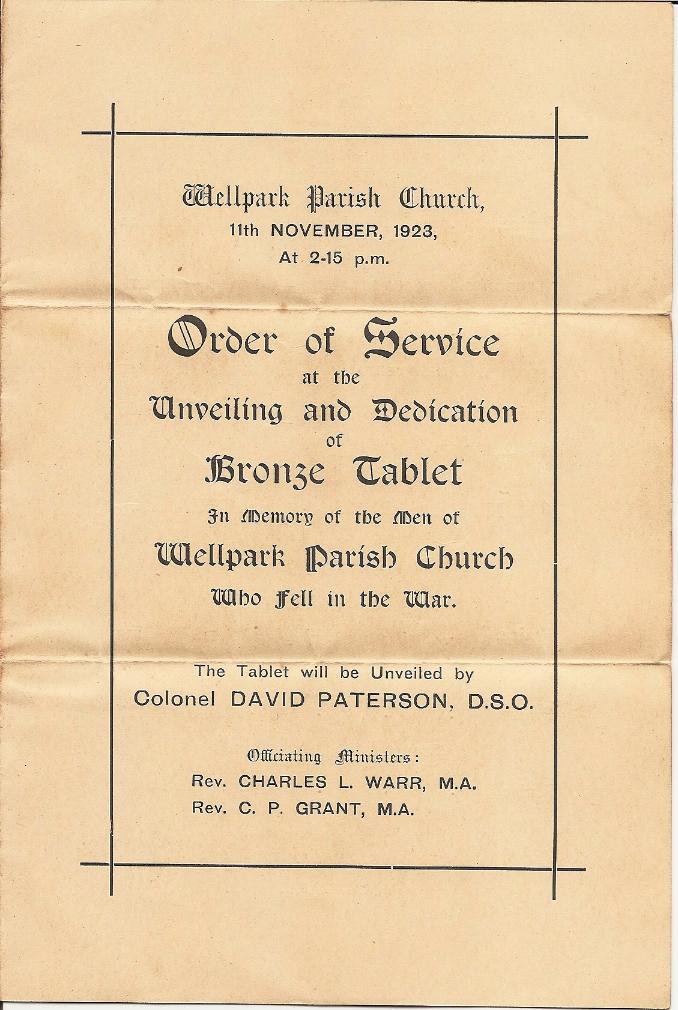
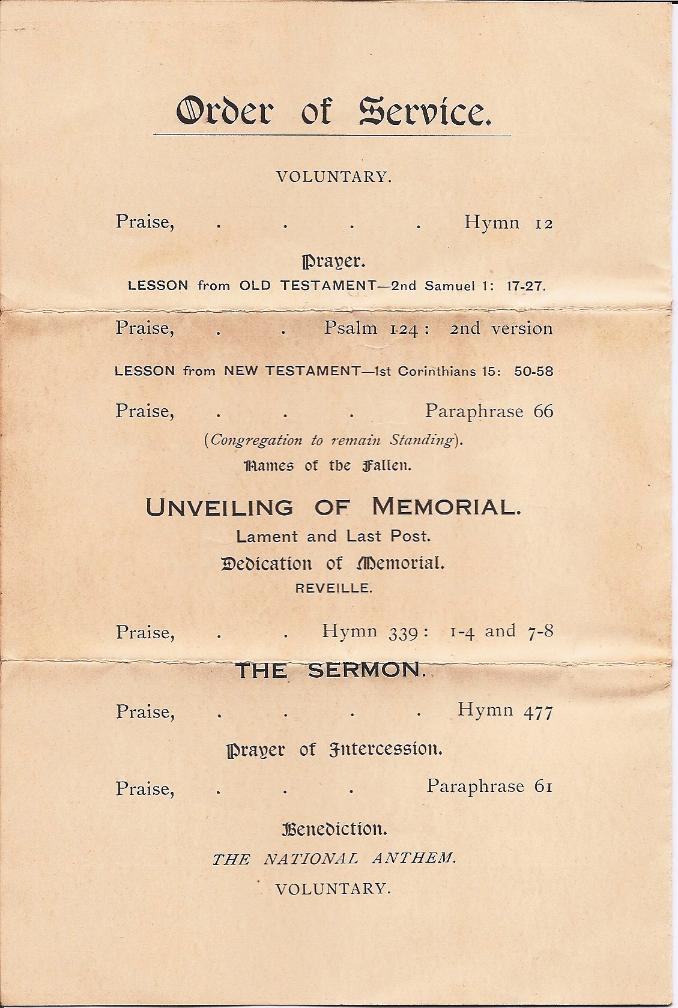
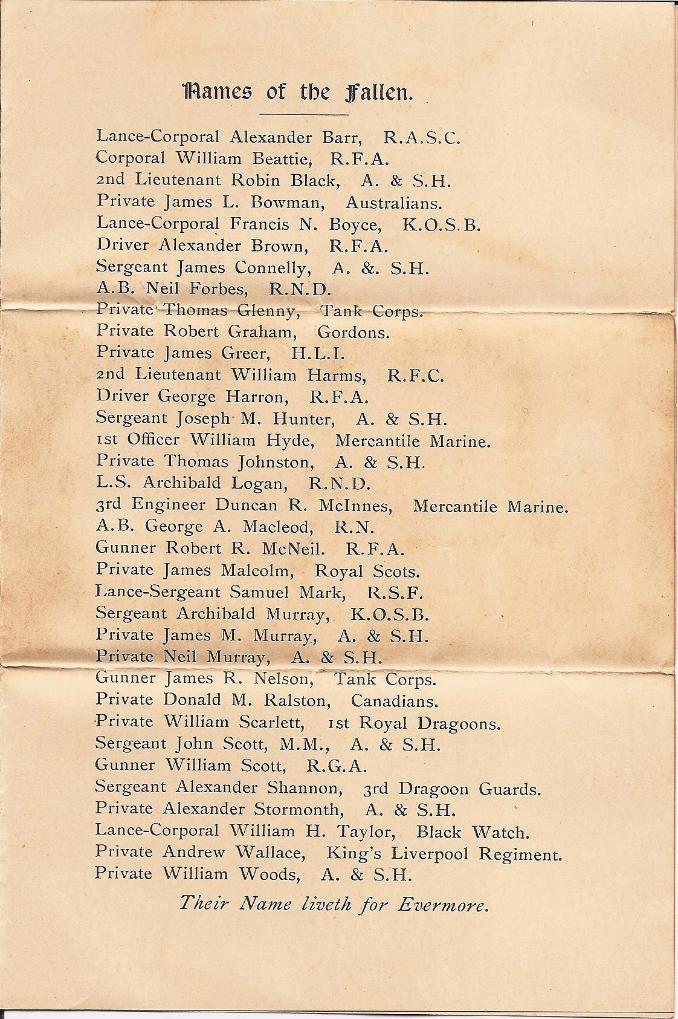
See bottom of this page for a 2017 discovery regarding Francis Noble Boyce.
Finally in 1918 the Great War came to an end, leaving a traumatised world and a changed world order.
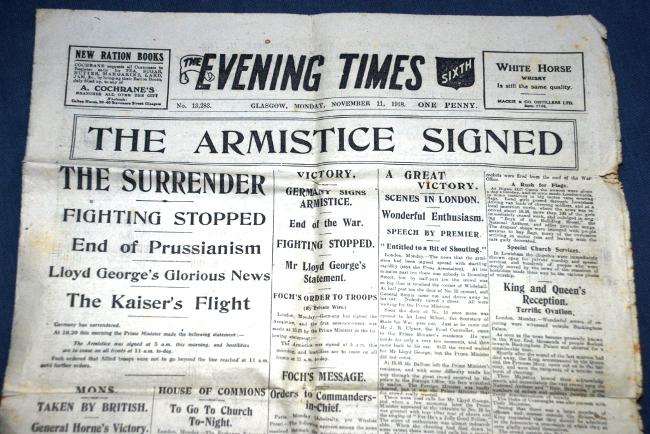
Bill, Hugh and Francis had a sister, my great-aunt Lizzie,1889-1970s, and another brother, Thomas,1887-1942. Lizzie was the only one to survive into my lifetime. All of great-granny's sons predeceased her.
Before the war, Francis studied at the famous Glasgow School of Art. I have somewhere a card displaying the colour palette they used in 1911. Perhaps Francis' art genes came down to my cousin Ian, who also studied Fine Art. Francis was enrolled there 1913-1916, receiving a Bursary of £12. Francis Noble Boyce is commemorated on the Glasgow School of Art Roll of Honour. I have an image of it, but cannot reproduce it here for copyright reasons.
My cousin Ian has provided some information on and a photo of his grandfather Thomas Boyce:
Thomas was a private in the Argyll and Sutherland Highlanders. He was
shot in the legs during the Battle of Ancre (13th November
1916). This was the last major British engagement in the Battle of the
Somme. During his convalescence in England he met the woman who became my Grandmother. She was working as a voluntary nurse. Her name was Hilda McCulloch and she had
German ancestry as her name might suggest. Thomas
did not return to the war due to his injuries, but continued to
correspond with Hilda, and they married in the 1920's.
An army document sent to Thomas's mother Mary at 9 Laird Street Greenock records that Thomas was wounded in action on 13th November 1916.
This is a photo of Thomas Boyce in later life:
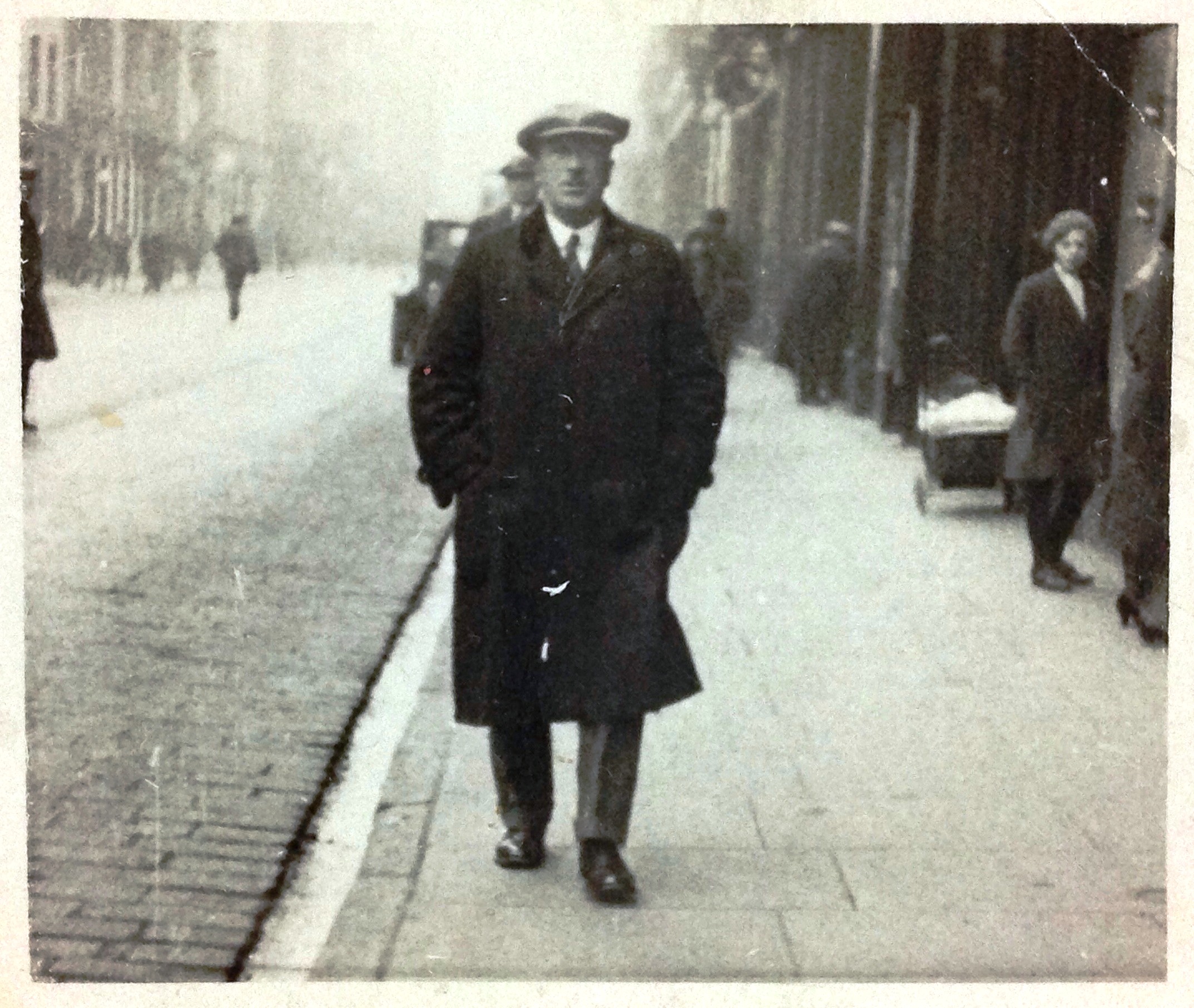

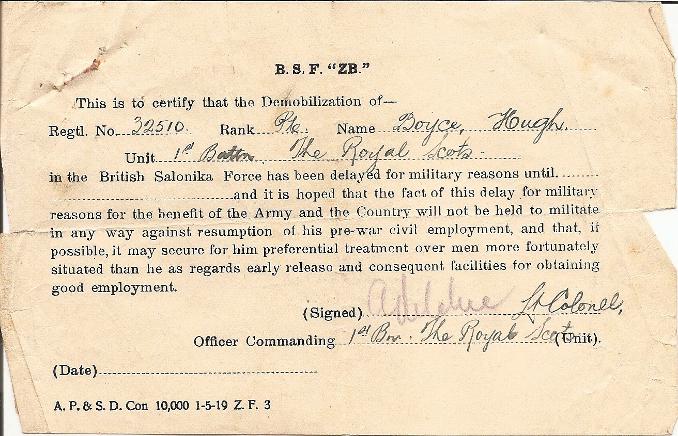
For soldiers who made it home, there were medals:
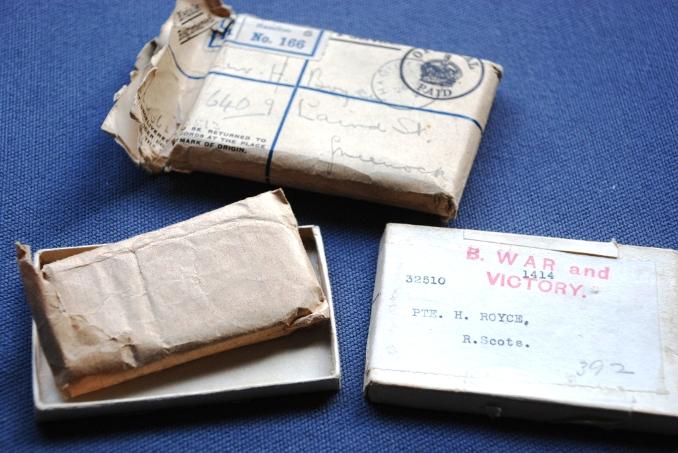
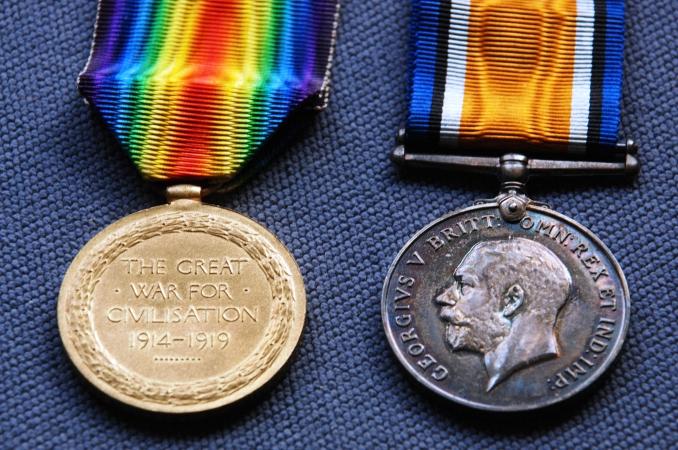
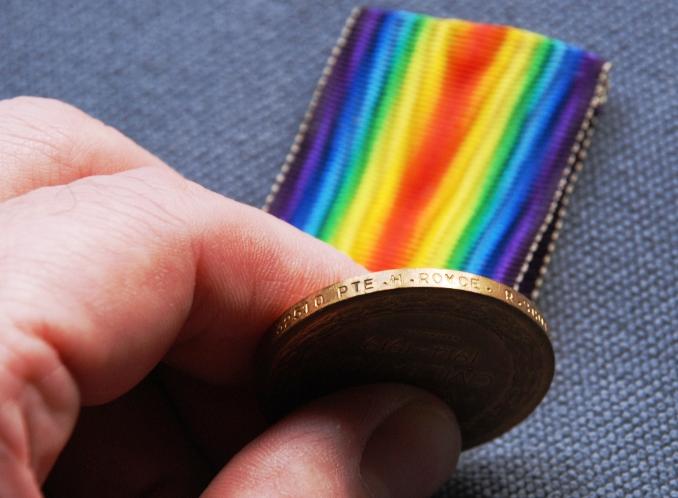
On the typed label and on the edge of the medal, there appears to be an error. My grandfather's surname name is given as Royce. I never noticed this until taking the photographs for this page.
This cartoon, from the centre pages of the Glasgow Evening TImes of 11th November 1918 (whose front page is shown further up this page) depicts with masterly understatement the power changes wrought by the war:
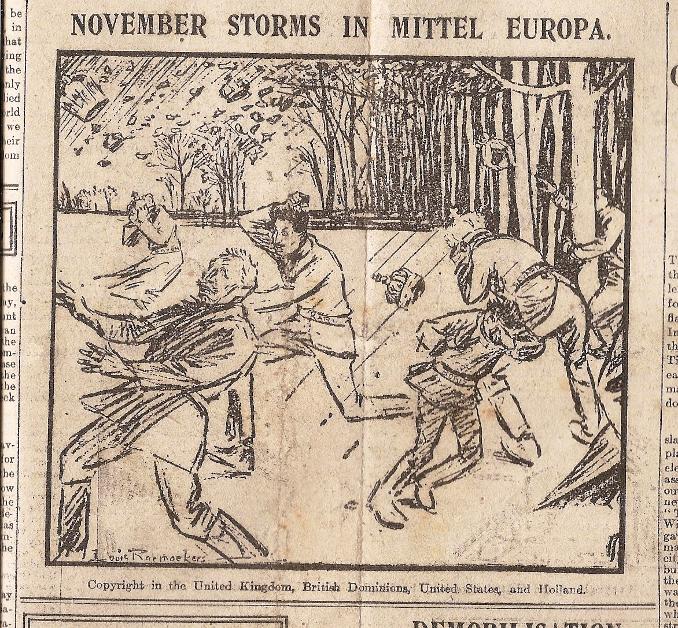
Back in civilian life, here's a photo of Hugh in his 'Sunday Best. The walking stick was his father's - my namesake, David Boyce, with his initials on the silver ferrule - and I have it. Far too short for me though, even if I needed a walking stick!
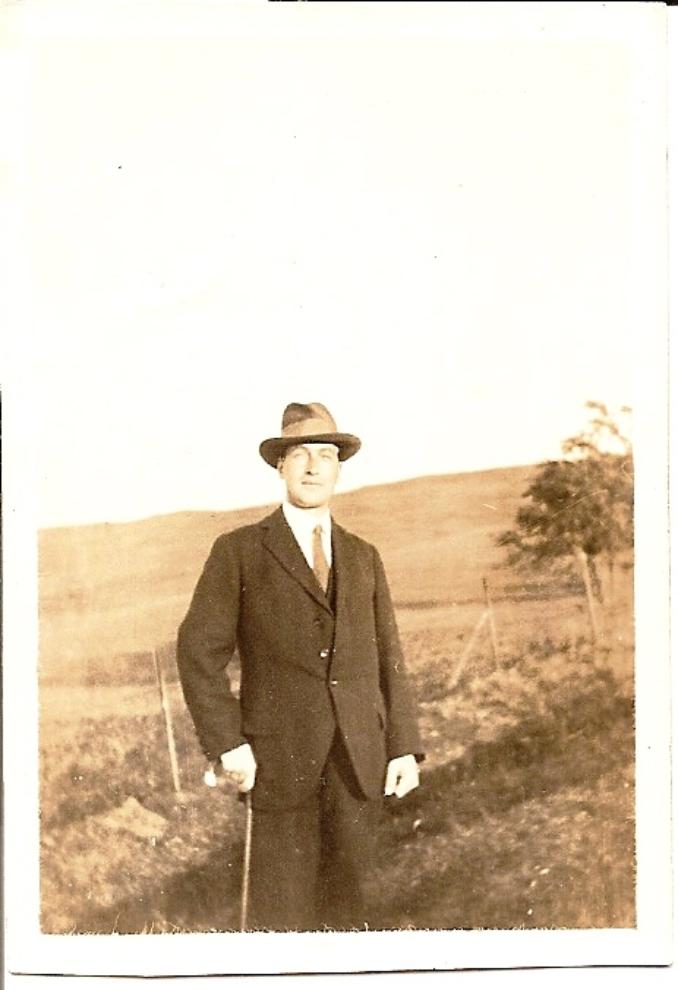
And out for a walk with a friend. I want hats like these! I think the dudes are on Lyle Hill, or maybe in Auchmountain Glen, but I'm not certain.
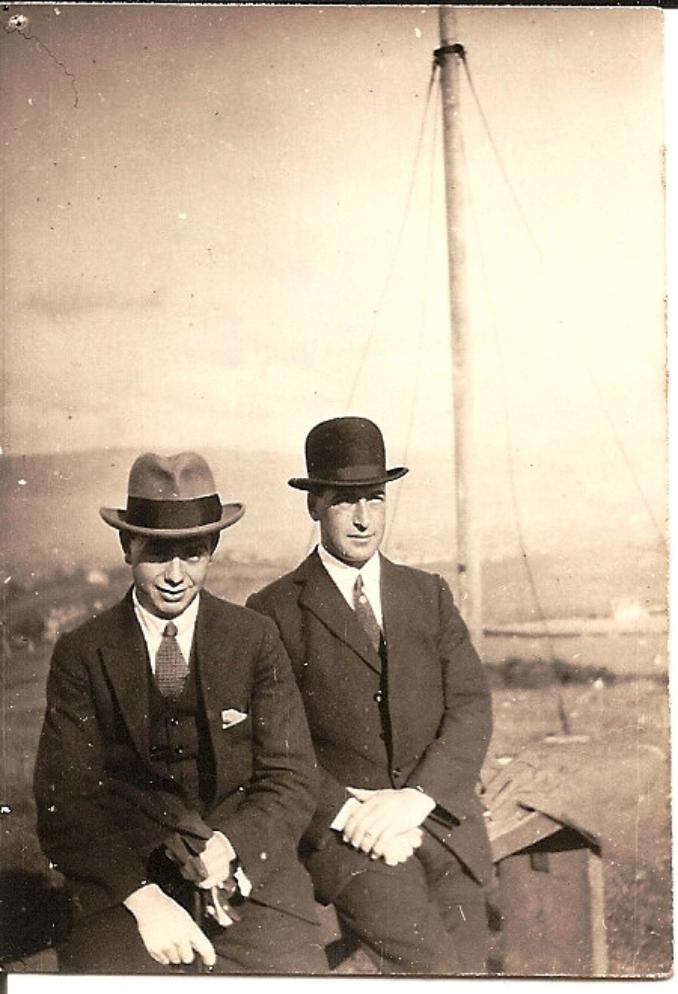
A 1938 reference written by Hugh's former Foreman. Note the beautiful use of the word "wrought":
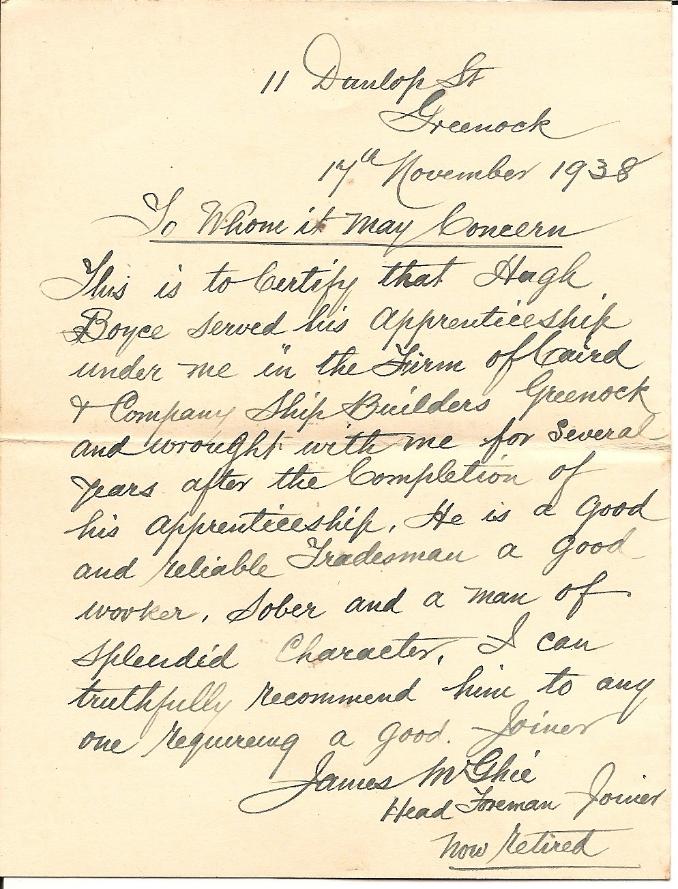
Hugh died in 1954, the year after Bill's death. His mother, my great-granny, outlived all but one of her children; her daughter Eliza (Lizzie). Lizzie married Victor Parsons, a Naval Officer, and they moved to Devon. In the early 1950s great-granny went to live with Lizzie and Victor, I think at the home of Victor's mother.
Hugh's parents, David and Mary Boyce (née Finlay) came from Northern Ireland. Born in the mid 1850s, Mary lived into her hundreth year. When she was 9 years old, the Laird visited her parents' home and asked how old Mary was now. When he was told, he said "Well, I think Mary's been at the school long enough. She can leave and go into service now". And since the Laird provided the schooling, that was it! Mary duly went into domestic service aged nine.
As a result, great-granny did not have a high degree of literacy. Here is a letter she wrote to Hugh's two daughters after his death. She had poor eyesight and failing health too, by this time.
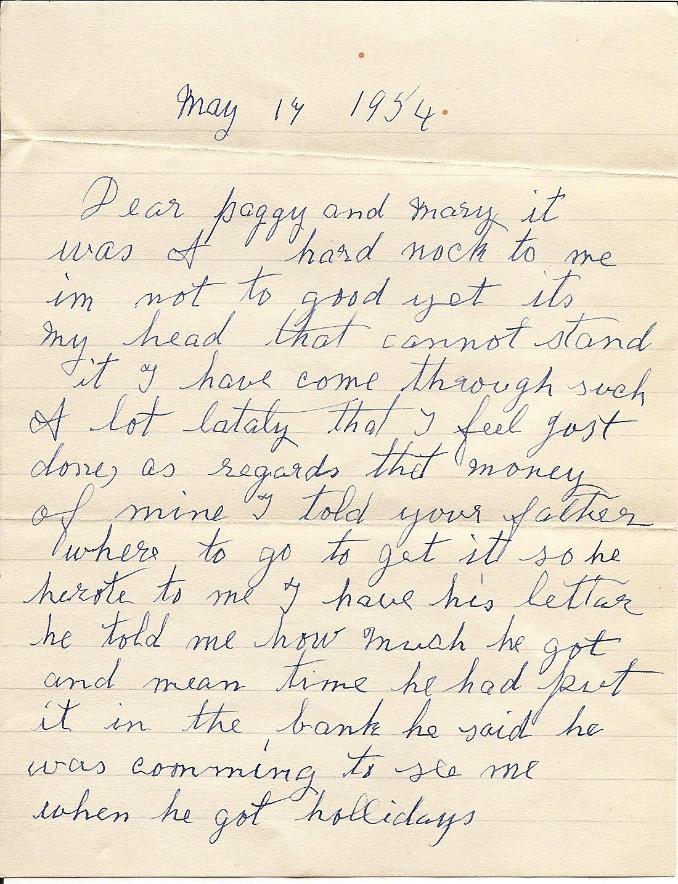
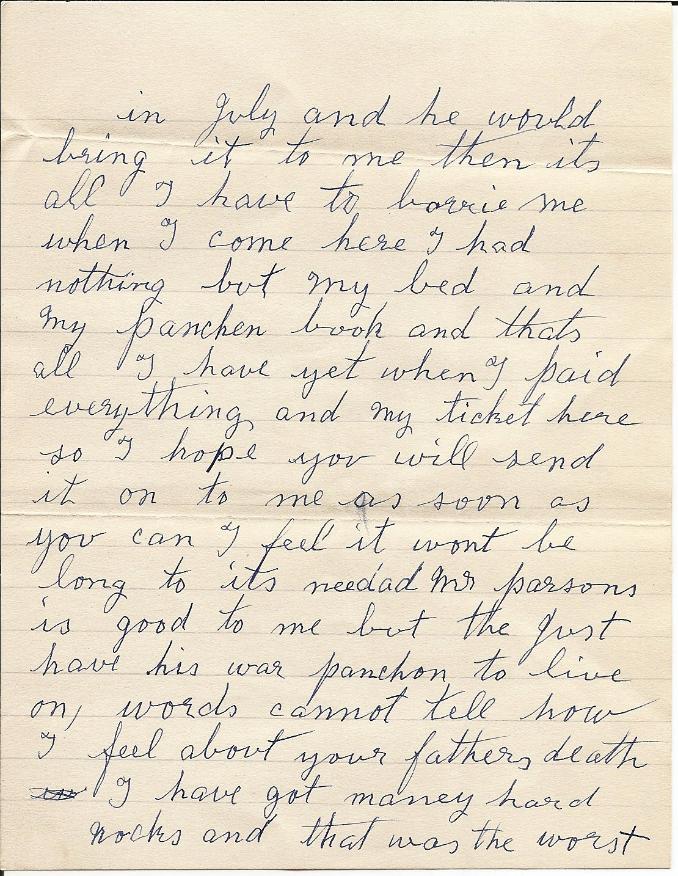
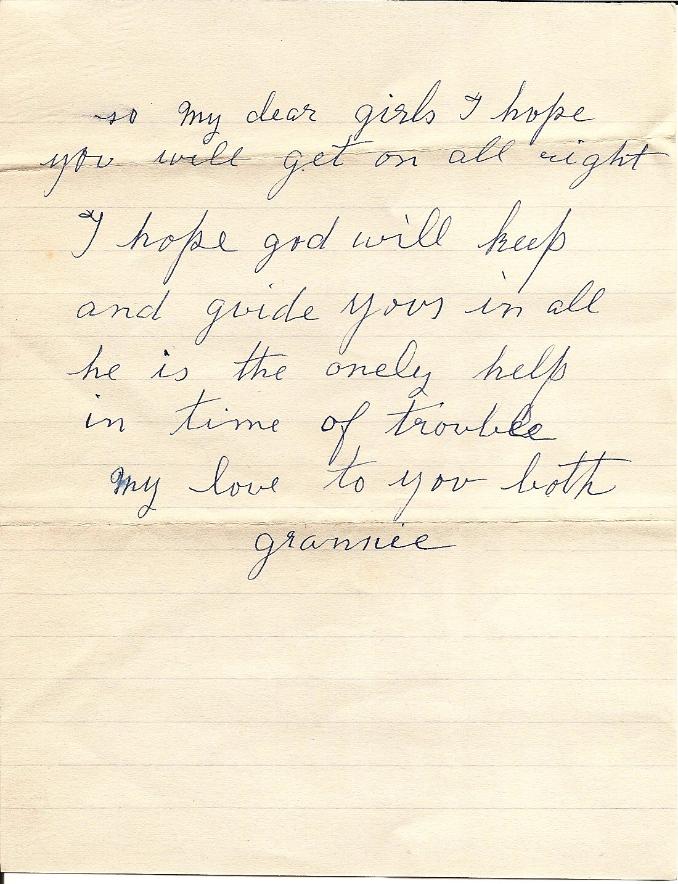
The reference to getting her money from a Greenock bank account (which my mother sent to her) makes one reflect that banking wasn't as easy back then - no electronic transfers in 1954!
Here is a photo of great-granny in her hundredth year:
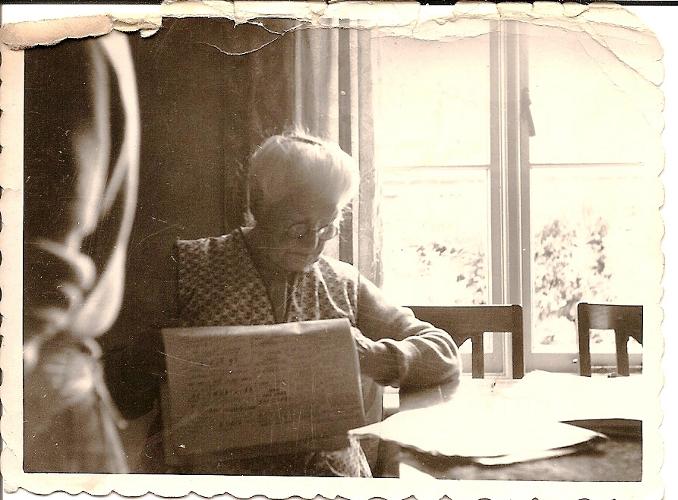
I hope these old photos and documents are of interest. Black and white silver bromide photographs were a robust and durable technology. Today, an astonishing number of images are generated each day on digital devices. It's easier then ever before to make photographic images.
But perhaps too, they are more transient. Hundred-year-old photos in family albums, with hand-written captions, are still readily accessible. But what if you find an old computer storage medium from the early 1990s - a Jazz drive, for example? How will you access the images?
And here is an image of an old packet of photographic paper in which some of the photos I've shown here are stored. The package design is attractive, and I am reproducing this for my graphics, photo and media buddies, Jane, Mazda, Martin, Dave, Campbell, Gary, Stoo, Neil, Dorothy. Missin' y'all!
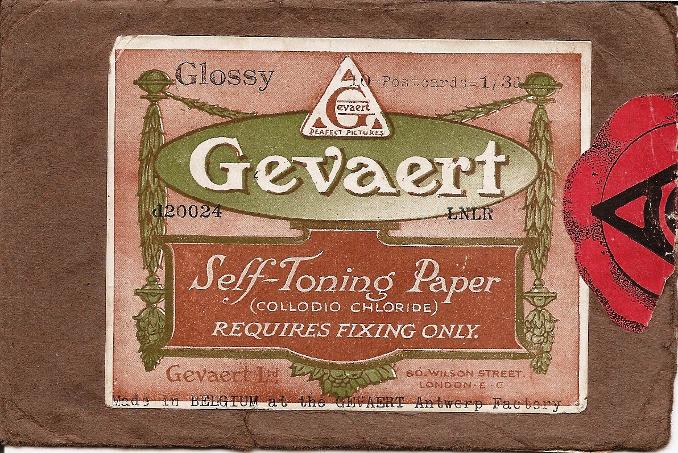
A bit of a mystery: Here is a Wellpark Parish Church Sunday School register from 1906. I don't know why my grandparents would have had this. In 1906 they were both children and could have been Sunday School pupils, but neither Hugh nor Alexandrina is on this register. Maybe it was among old records given to Alexandrina when she taught Sunday School as a young woman. By then the church was called Wellpark West. At any rate, in case it is of interest to anyone, here it is.
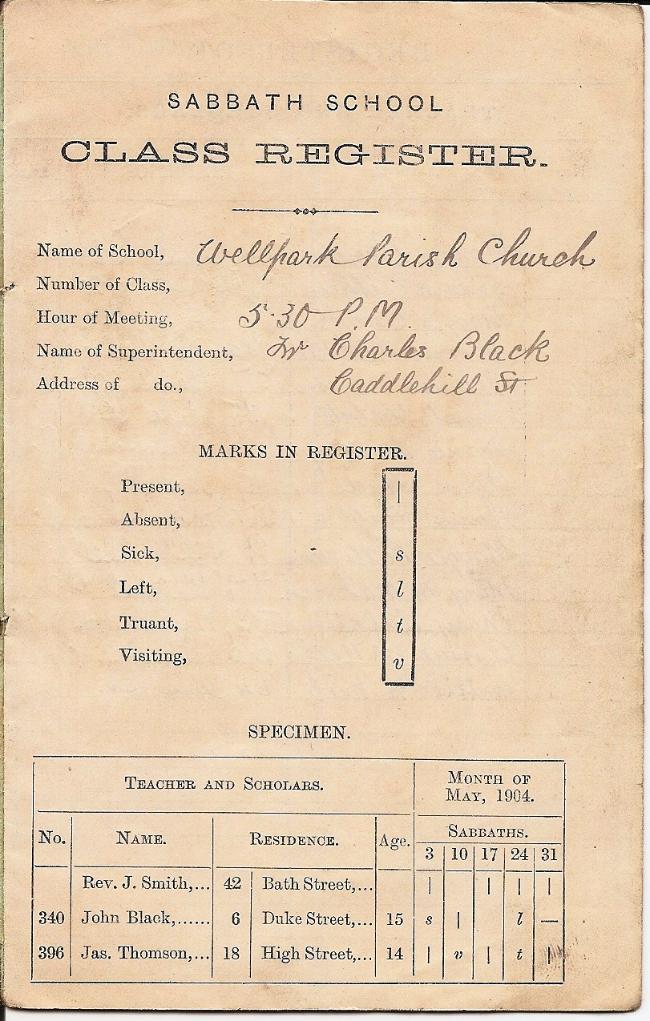
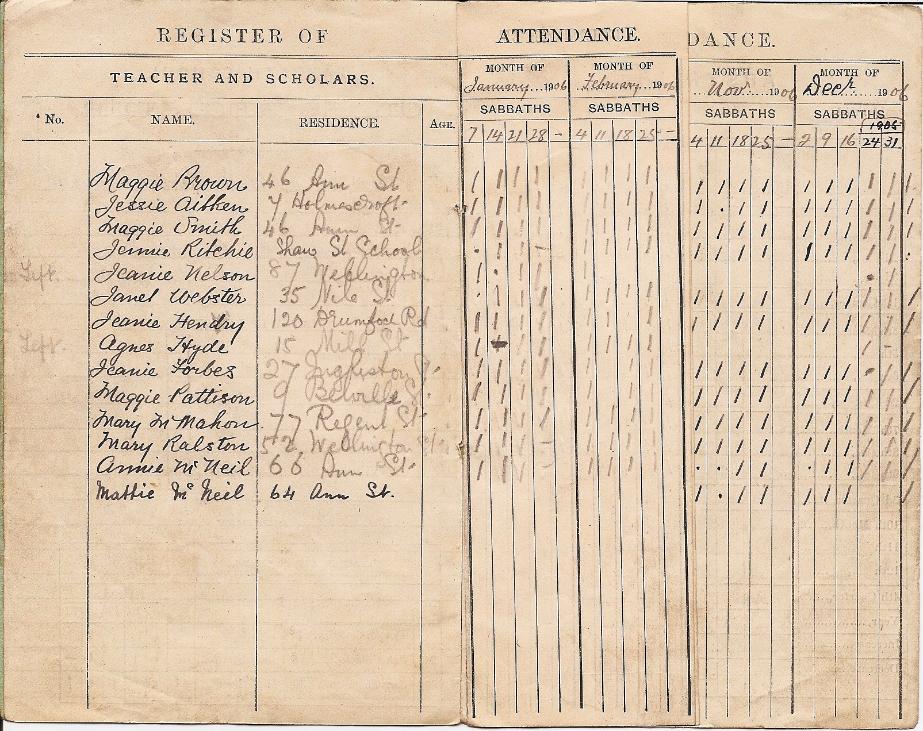

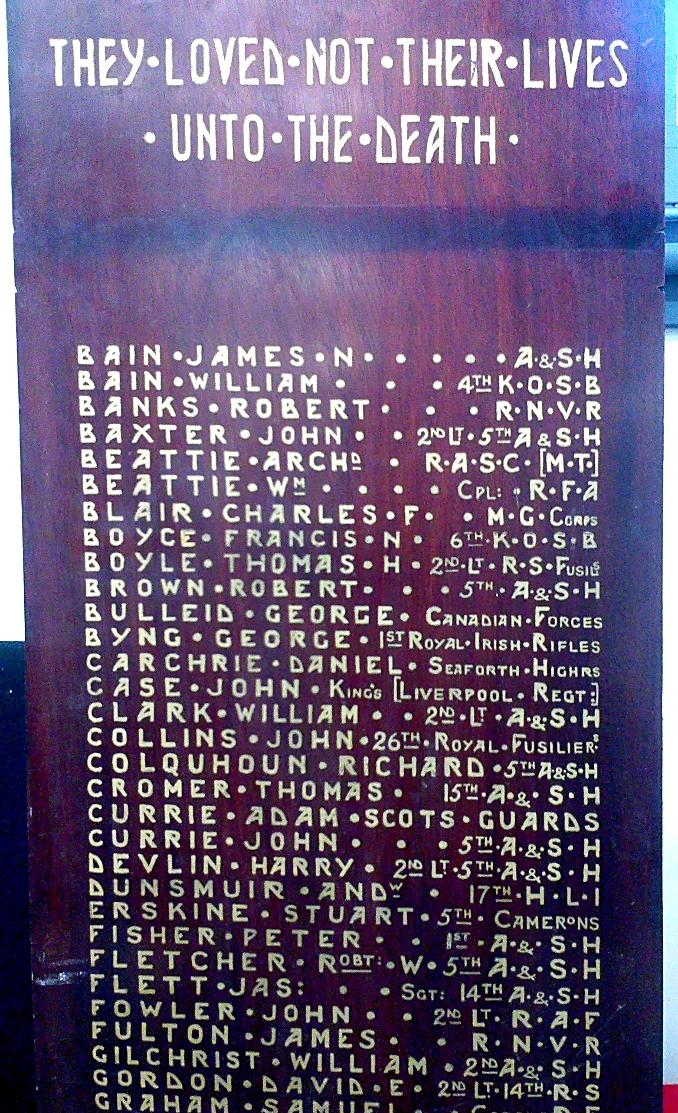
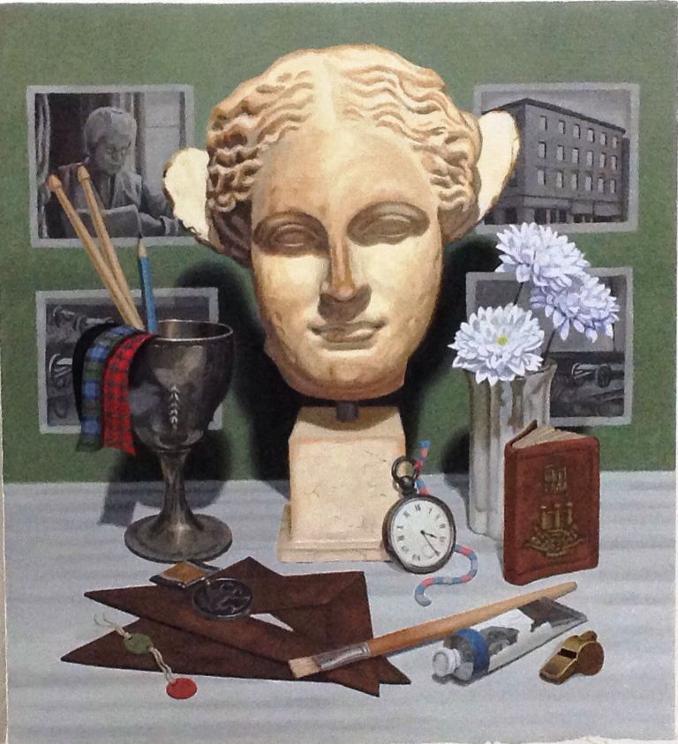
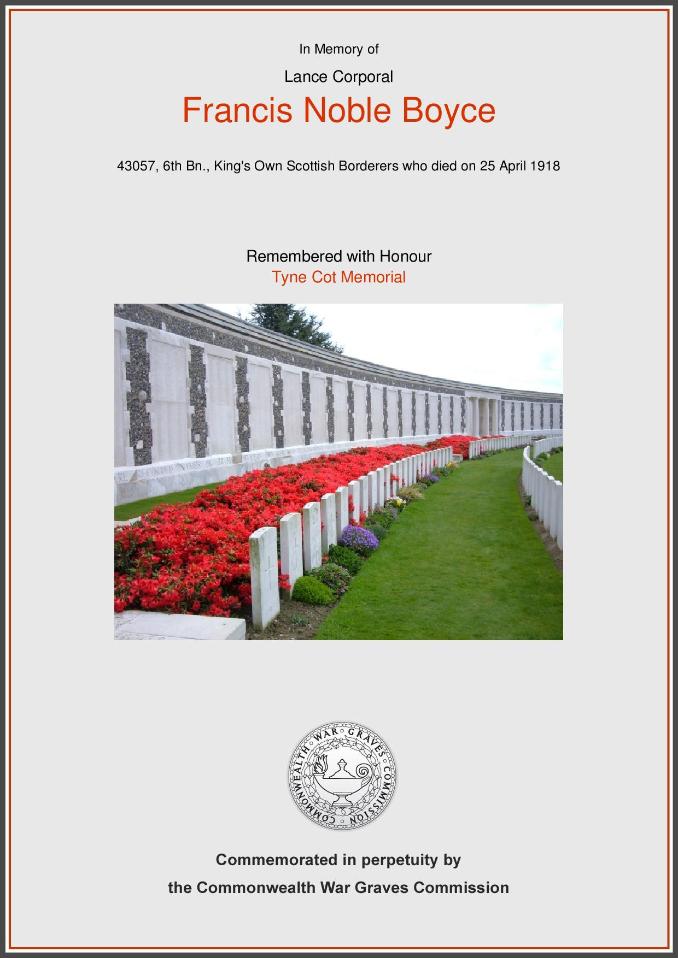

Who’s for the game, the biggest that’s
played,
The red crashing game of a fight?
Who’ll grip and tackle the job unafraid?
And who thinks he’d rather sit tight?
